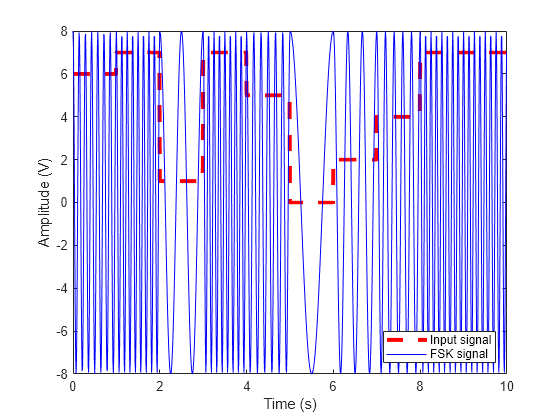comm.DiscreteTimeVCO
Generate variable frequency sinusoid
Description
The comm.DiscreteTimeVCO
System object™ object generates a signal whose frequency shift from the quiescent frequency
property is proportional to the input signal, treating the input as a voltage.
To generate a variable frequency sinusoid:
Create the
comm.DiscreteTimeVCOobject and set its properties.Call the object with arguments, as if it were a function.
To learn more about how System objects work, see What Are System Objects?
Creation
Description
discreteVCO = comm.DiscreteTimeVCOdiscreteVCO. This object generates a sinusoidal signal, shifting
its frequency from the specified quiescent frequency to a value proportional to the input
signal.
discreteVCO = comm.DiscreteTimeVCO(Name=Value)comm.DiscreteTimeVCO(OutputAmplitude=2.5) sets the amplitude of the
output signal to 2.5.
Properties
Usage
Syntax
Description
Y = discreteVCO(X)Y, shifting its frequency from the
specified QuiescentFrequency
property to a value that is proportional to the input signal,
X.
Input Arguments
Output Arguments
Object Functions
To use an object function, specify the
System object as the first input argument. For
example, to release system resources of a System object named obj, use
this syntax:
release(obj)
Examples
Algorithms
The comm.DiscreteTimeVCO system object generates a signal with a frequency shift
from the quiescent frequency that is proportional to the input signal, interpreted as a
voltage. Given the input signal (u(t)), the expression
for the output signal becomes
where:
Ac is the output amplitude.
fc is the quiescent frequency.
kc is the input sensitivity.
is the initial phase.
Extended Capabilities
Version History
Introduced in R2012a
